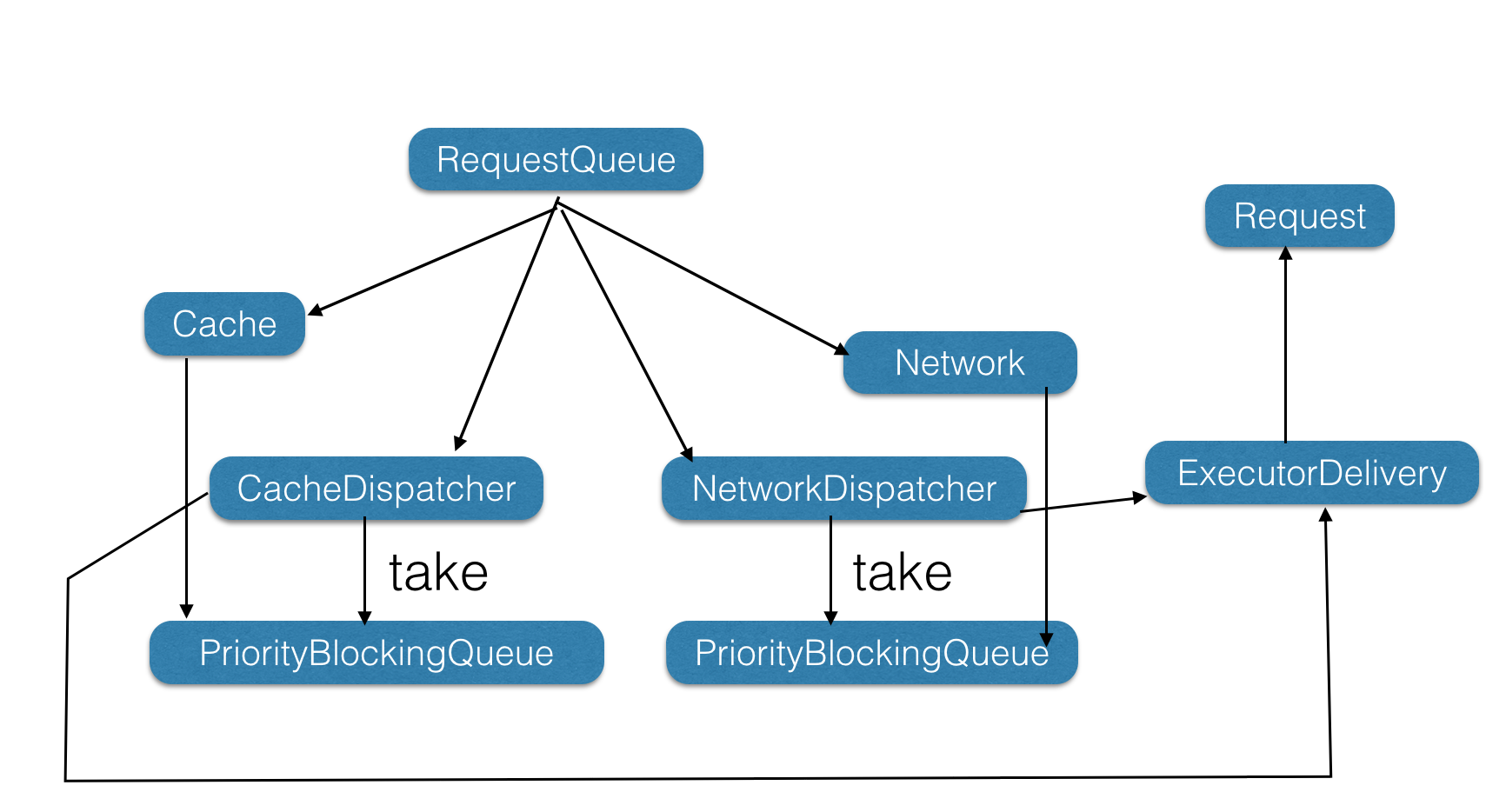Volley,中文翻译为「万箭齐发」,也就是适合大规模的小数据包发送的场景。Google 于 2013 年 I/O 大会上发布这个类库,试图弥补 UrlConnection 封装性太差的问题(Android 原生系统中用于网络请求的组件一般是 HttpUrlConnection 和 HttpClient 两种,后者适合 Android2.2 及以前的版本,但在 API23 开始便被舍弃了,前者适合于 Android2.3 及以上版本)。由于 Volley 自带异步线程回调机制,可以代替 AsyncTask 繁琐的接口,另外加上 Volley 的缓存功能,因此总体来说是一个大的改进。
<br>
开发者接口
Volley 通常的使用接口如下:
1 | RequestQueue mRequestQueue = Volley.newRequestQueue(mContext.getApplicationContext()); |
简单来讲,开发者需要关注的类只有 RequestQueue、Request,所以接下来就把目标集中在这两个类上。
<br>
浅析源代码
Volley.java(片段)
1 | public static RequestQueue newRequestQueue(Context context, HttpStack stack) { |
Volley 内部创建 RequestQueue 的时候,会根据版本号创建不同的 HttpStack,因为开头说过 Android 的两大网络组件适用的系统版本号不同。在实例化 RequestQueue 的时候,Android 传入两个组件:DiskBasedCache, BasicNetwork。前面也提到过,Volley 内部除了做网络请求,还会缓存请求,而这两个组件分别对应这两种功能。注意缓存目录是 app 内部的 cache file。
下面进入 RequestQueue 内部。
RequestQueue.java(片段)
1 | public RequestQueue(Cache cache, Network network, int threadPoolSize, ResponseDelivery delivery) { |
这一段代码基本把所有重要的组件涵盖了。其中最重要的变量分别是:mCacheQueue, mNetworkQueue, mCache, mNetwork, mDispatchers, mCacheDispatcher, mDelivery。接下来不会深入去了解这些组件的细节,只大概分析一下它们的作用。
mDispatchers 和 mCacheDispatcher 分别是负责网络请求以及本地缓存的任务线程(继承自 Thread ),其中网络线程默认实例化了四条。
mCacheQueue, mNetworkQueue 是存放 Request 的队列,缓存线程和网络线程会分别从这两个队列获取 Request。队列类型是 PriorityBlockingQueue,是 java 并发库的一种队列实现,能够对队列内的元素进行优先级排序(实现 Request 的优先级请求),同时是属于阻塞性队列( Blocking,如果没有元素,会使相应的线程陷入阻塞,而不是空转)。
mCache, mNetwork 是之前传入的 DiskBasedCache, BasicNetwork。这两个组件分别是为了解析缓存的请求和网络请求使用的。可以认为是请求解析类。
mDelivery 主要用于回调接口的调用,Volley 将它实例化成 ExecutorDelivery,从构造函数中可以看出,Volley 将它和 Handler(绑定 MainLooper )绑定,从而可以和 UI 线程交互。
<br>
总体架构图
